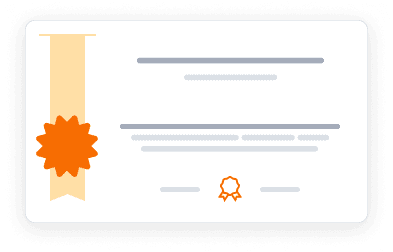Learn to interface sensors and actuators with DragonBoard 410c for IoT applications. Develop software for data acquisition and control.
Learn to interface sensors and actuators with DragonBoard 410c for IoT applications. Develop software for data acquisition and control.
Dive into the world of Internet of Things (IoT) with this comprehensive course on sensing and actuation from devices. Learn to interface common sensors and actuators to the DragonBoard™ 410c hardware, developing software for data acquisition, processing, and actuation. This course covers essential concepts like analog-to-digital and digital-to-analog conversion, preparing you for creating mobile-enabled IoT products. You'll gain hands-on experience with various sensors (IR, microphones, cameras, GPS, accelerometers) and actuators (stepper motors, LEDs), while learning to make informed design decisions about sampling frequencies and bit-width requirements. Perfect for those looking to bridge the gap between physical devices and digital processing in IoT applications.
4.5
(156 ratings)
22,586 already enrolled
Instructors:
English
پښتو, বাংলা, اردو, 3 more
What you'll learn
Estimate sampling frequency and bit-width requirements for different sensors
Program GPIOs to enable communication between DragonBoard 410c and common sensors
Write data acquisition code for various sensors (IR, microphones, cameras, GPS, accelerometers, ultrasonic)
Develop applications that process sensor data and control actuators like stepper motors and LED matrices
Implement Bluetooth communication for wireless device control
Create a server-based system for monitoring and controlling IoT devices
Skills you'll gain
This course includes:
3 Hours PreRecorded video
9 quizzes
Access on Mobile, Tablet, Desktop
FullTime access
Shareable certificate
Closed caption
Get a Completion Certificate
Share your certificate with prospective employers and your professional network on LinkedIn.
Created by
Provided by

Top companies offer this course to their employees
Top companies provide this course to enhance their employees' skills, ensuring they excel in handling complex projects and drive organizational success.





There are 10 modules in this course
This course provides a comprehensive introduction to sensing and actuation in Internet of Things (IoT) devices. Students will learn to interface various sensors and actuators with the DragonBoard™ 410c hardware platform. The curriculum covers essential concepts such as GPIO programming, amplifier building, stepper motor control, LED matrix manipulation, and working with infrared and ultrasonic sensors. Participants will also explore Bluetooth communication and server-based monitoring and control of IoT devices. Through hands-on projects and coding exercises, students will gain practical experience in data acquisition, signal processing, and device control, preparing them for real-world IoT applications.
Welcome
Module 1 · 28 Minutes to complete
Course 3 Lecture series
Module 2 · 1 Hours to complete
Terminology/Cheat Sheet (Beginner)
Module 3 · 1 Hours to complete
GPIO Programming
Module 4 · 2 Hours to complete
Stepper Motors
Module 6 · 1 Hours to complete
LED Block
Module 7 · 1 Hours to complete
Infrared Sensors
Module 8 · 1 Hours to complete
Bluetooth Remote
Module 9 · 2 Hours to complete
DragonBoard™ 410c Monitoring and Control
Module 10 · 1 Hours to complete
Fee Structure
Payment options
Financial Aid
Instructors
IoT and Mobile Technology Innovation Leader
Dr. Ganz Chockalingam serves as Principal Engineer at the Qualcomm Institute, UC San Diego, bringing over 25 years of expertise in mobile technology and software development. After earning his Ph.D. in Electrical & Computer Engineering from the University of Iowa in 1995, his career path included significant roles at Ford Motor Company's Scientific Research Laboratory and co-founding Coolsync Inc., a web-based single sign-on service. His entrepreneurial journey continued at Wingcast, a Qualcomm-Ford joint venture, where he developed wireless telematics applications. Since joining Calit2-UCSD in 2002, he has led groundbreaking research in mobile applications across health monitoring, telematics, and medical domains. On Coursera, he teaches a comprehensive series of Internet of Things courses, including specialized modules on DragonBoard development, cloud services, and mobile surveillance systems. His academic contributions include numerous IEEE journal publications and service as a reviewer for IEEE Transactions on Automatic Control. His unique blend of industrial and academic experience makes him a leading authority in IoT and mobile technology education, with his courses reaching thousands of students globally through the Coursera platform.
Healthcare Technology Innovator and Signal Processing Expert
Harinath Garudadri serves as Research Scientist at the Qualcomm Institute of Calit2, UCSD, transitioning from a distinguished industry career to focus on advancing healthcare technology accessibility. His extensive background spans over four decades, beginning with his education from IIT Bombay and Ph.D. from the University of British Columbia. His career includes 16 years at Qualcomm, where he made significant contributions to speech recognition and audio coding technologies. His impressive portfolio includes 40 granted patents across diverse fields including body area networks, audio processing, video technology, speech recognition, and biomedical signal processing, with an additional 14 pending patents. His current research focuses on healthcare innovation, particularly supporting clinical research for emerging hearing aids and developing technologies to reduce healthcare delivery costs. His work has been instrumental in creating solutions that extend medical care beyond hospital walls through low-power sensing, telemetry of physiological data, and reliable body area networks. His contributions have been widely implemented in commercial cell phones and networks, earning over 3,491 citations for his research publications. At UCSD, he continues to bridge the gap between academic research and practical healthcare solutions, focusing on biomedical signal processing and healthcare technology accessibility.
Testimonials
Testimonials and success stories are a testament to the quality of this program and its impact on your career and learning journey. Be the first to help others make an informed decision by sharing your review of the course.
Frequently asked questions
Below are some of the most commonly asked questions about this course. We aim to provide clear and concise answers to help you better understand the course content, structure, and any other relevant information. If you have any additional questions or if your question is not listed here, please don't hesitate to reach out to our support team for further assistance.





